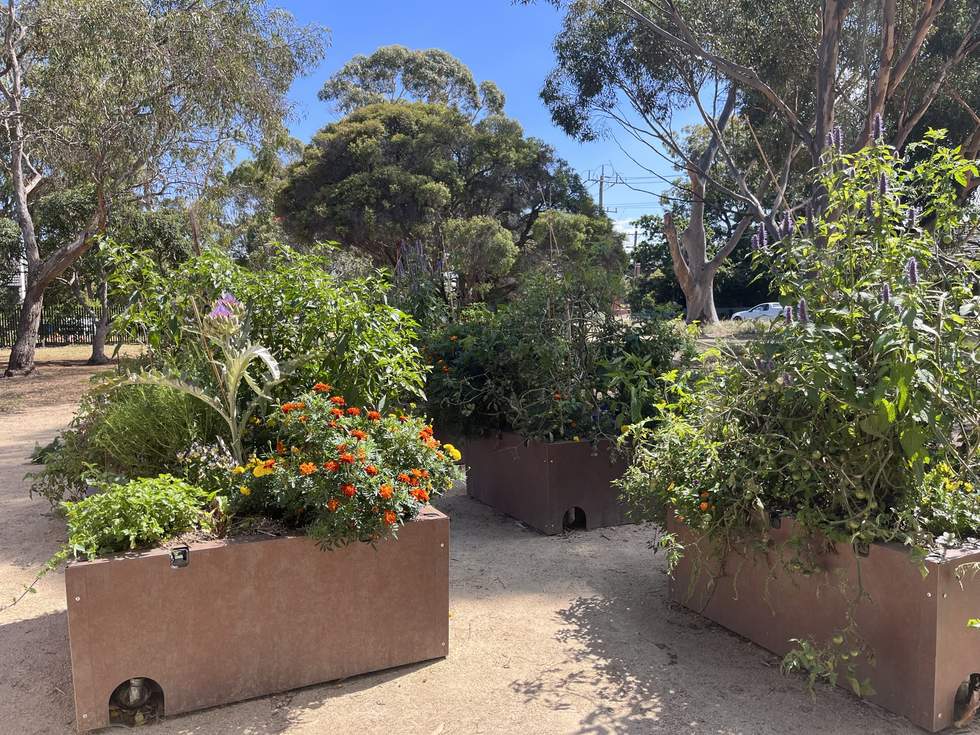
Bayside community produce gardens
Providing community opportunities to grow food, connect with nature and others, and learn about plants and sustainable living practices.
Community gardens provide numerous benefits beyond growing fresh fruit and vegetables.
They encourage
- sustainable living practices and environmental education
- provide opportunities for social connection and interaction
- increased physical activity and improved mental health
- reduce food waste
Community gardens have real-world opportunities to incorporate sustainable environmental practices, including
- energy and water efficiency
- implementing sustainable ways of managing pests and weeds,
- using recycled materials
There are many types of community gardens across Bayside, including:
- Shared gardens. All gardeners work as a team. They share all tasks across the entire community garden space. Produce is shared.
- Facilitated gardens. Produce gardens are integrated into an existing community hub (such as a community centre or common open space) and managed on the Council's behalf.
- Allotment gardens. Individuals or groups have their allotment plots and keep the produce grown.
- Communal gardens. These spaces have both allotments and shared gardening space.
Formally managed allotment gardens typically:
- are operated by not-for-profit incorporated community groups
- offer individual plots and require membership
- are fenced and include water tanks, composting facilities, and communal areas
- may have waiting lists
- are generally located on Council-owned or managed land.
Community Garden Policy
Establishing a community produce garden requires planning, collaboration, and engagement. To support community garden development Council has developed a Community Garden Policy. The policy sets a framework to ensure that the development of community gardens is structured, inclusive and cost-effective.
Existing Community Gardens in Bayside
A variety of Bayside community groups and organisations run community gardens. Each has different memberships and ways of contributing to individual garden plots or communal spaces.
Look through the list below. Please contact each garden group directly for further information about how to get involved.
Little Brighton Reserve Community Garden
Facilitated shared garden
A community produce garden situated at Union Street, Brighton East. This garden is an open, communal space for everyone to enjoy.
At the moment the best way to get involved is to register as a Friends of Bayside Environmental Volunteer.
For more information on the community planting days and to access the tools in the storage boxes (including the tap key) please contact the current Garden Convenor.
Where: Little Brighton Reserve Community Garden
Address: Union Street, Brighton East (near the playground)
When: 3rd Tuesday of each month (weather permitting)
Time: 11am
Contact: Helen Gries 0403 723 420 or helengries@optusnet.com.au
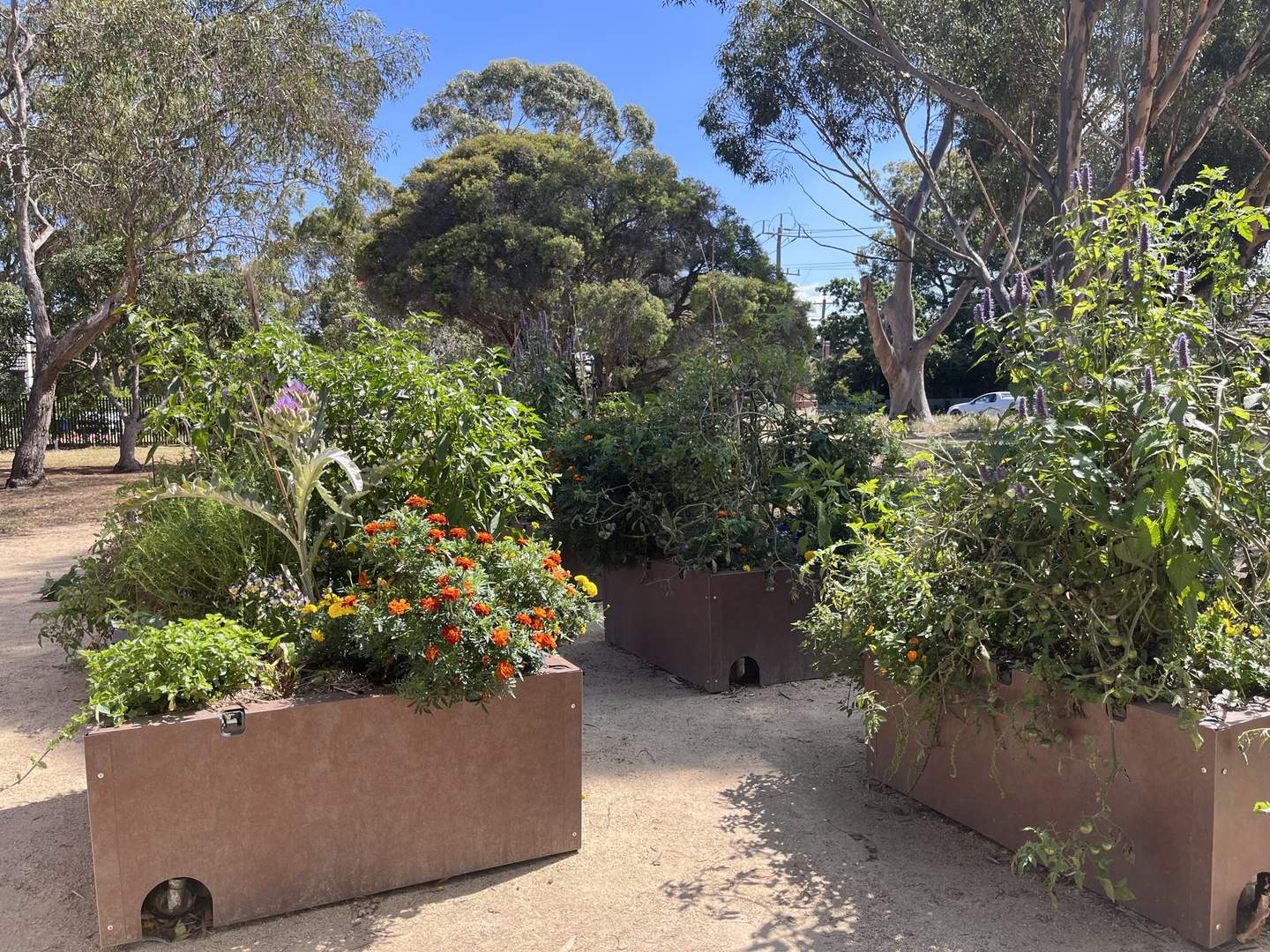
Hampton Community Centre Garden
Shared Garden (Community Centre)
A gardening group located at Hampton Community Centre.
Supported by Haileybury College teachers, Hampton Community Centre Garden are excited to bring the community veggie garden back to life for everyone to enjoy.
The group meets every Friday from 9.30am to 12pm. It welcomes anyone who is passionate about gardening or simply enjoys spending time outdoors.
Come lend a hand and connect with like-minded individuals in our community and make the garden flourish again.
Please email Hampton Administration for further details.
Where: Hampton Community Centre
Address: 14 Willis Street, Hampton
When: Fridays during school terms
Time: 9:30am - 12pm
Contact: 0492 800 592
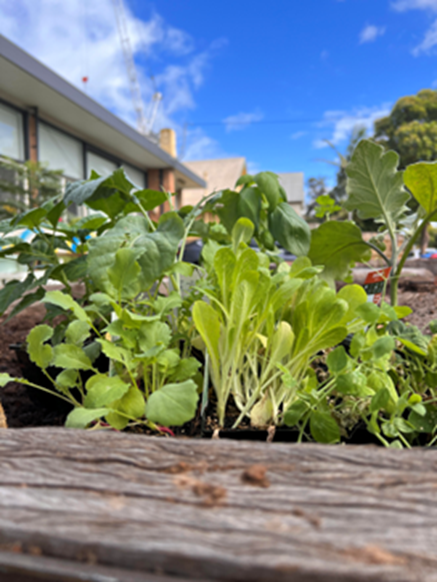
Castlefield Community Centre Garden
Shared garden
Castlefield Community Gardens invite you to come and experience their community garden. The space is used by a variety of the centre’s programs, including children’s groups and people of all abilities.
Produce from our garden is used to make free Community Café lunches. It is a place where you can plant, grow, water, eat or simply sit and enjoy the space.
Everyone is welcome.
Where: Castlefield Community Centre
Address: 505 Bluff Rd, Hampton
When: Monday – Friday during school terms
Time: 10am -2pm
Contact: 9068 3882 or email: castlefield@bayciss.org.au
More information on the community group can be found on their website.
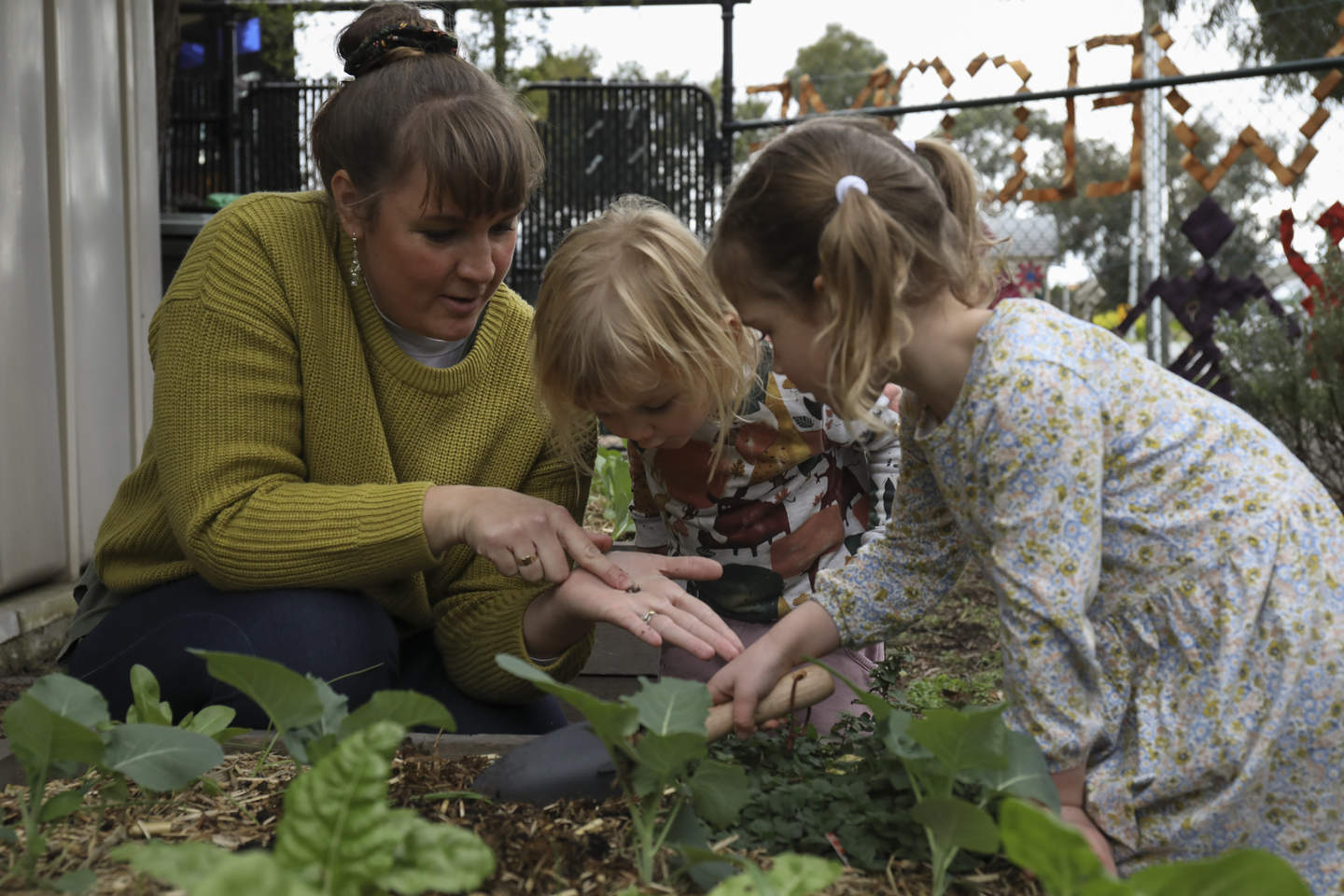
Tjilitjirrin Reserve Community Garden (Sandringham)
Allotment and shared garden (fenced)
Newly leased to Tjilatjirrin Community Garden Group and currently under construction. Please contact Martin for details on how to become a member.
Where: Tjilatjirrin Reserve (next to the Sandringham Bowls Club)
Address: 25 Tulip St, Black Rock
When: Key access only
Contact: Martin Curtis, Tjilatjirrin Community Garden Club Secretary m.s.curtis@bigpond.com
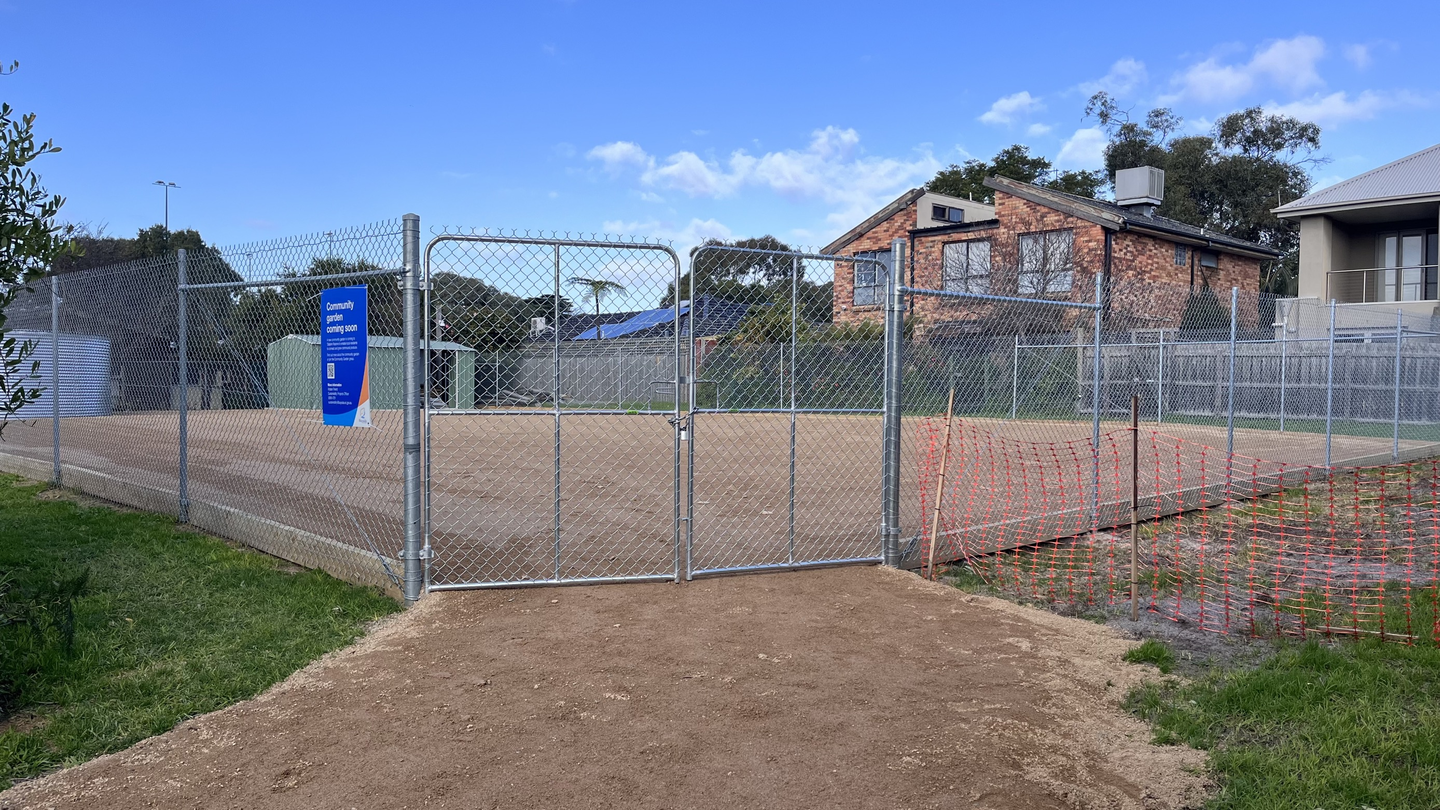
The People's Patch Pocket Garden (Sandringham)
Shared garden
Located in the heart of Sandy Village, the ‘Peoples' Patch’ pocket garden is a small patch of land at the rear of 34 Waltham St Sandringham. You can access the garden from the `Blue Lady Gallery' Laneway. It is adjacent to the rear car-park, east of Coles supermarket.
This project began with rubbish removal and repair of the ragged boundary paling fence, all labour generously donated by Running Man Services, followed by some artwork by local street artist, Ash Hoary using donated Haymes Paint.
Future works will include installing a paved garden path and timber seat, as well as soil rejuvenation and planting of indigenous ground cover, and planting of indigenous herbs in the raised beds for use by local community members.
Thanks to date for support from Bayside Council, Sandringham Community (Bendigo) Bank via a grant, Zoe Daniels office, the Bay Road Nursery and Cafe, Adam the Flowerman, and SSAP members.
This is the first of a number of community garden projects that are consistent within ‘Village Zero’ objectives. Others garden projects in the planning stages include an upgrade of the Sandringham Station platform planters (and Melrose St planters) as well as enhancing the station’s external gardens.
With an exciting number of projects in store, new SSAPGG helpers are very welcome.
Where: Sandringham Street Art Project (SSAP)
Address: Rear of 34 Waltham St Sandringham
Contact: David Perry (SSAPGG) convenor, dave.f.perry@gmail.com and 0417 342 049
For more information visit SSAP website.
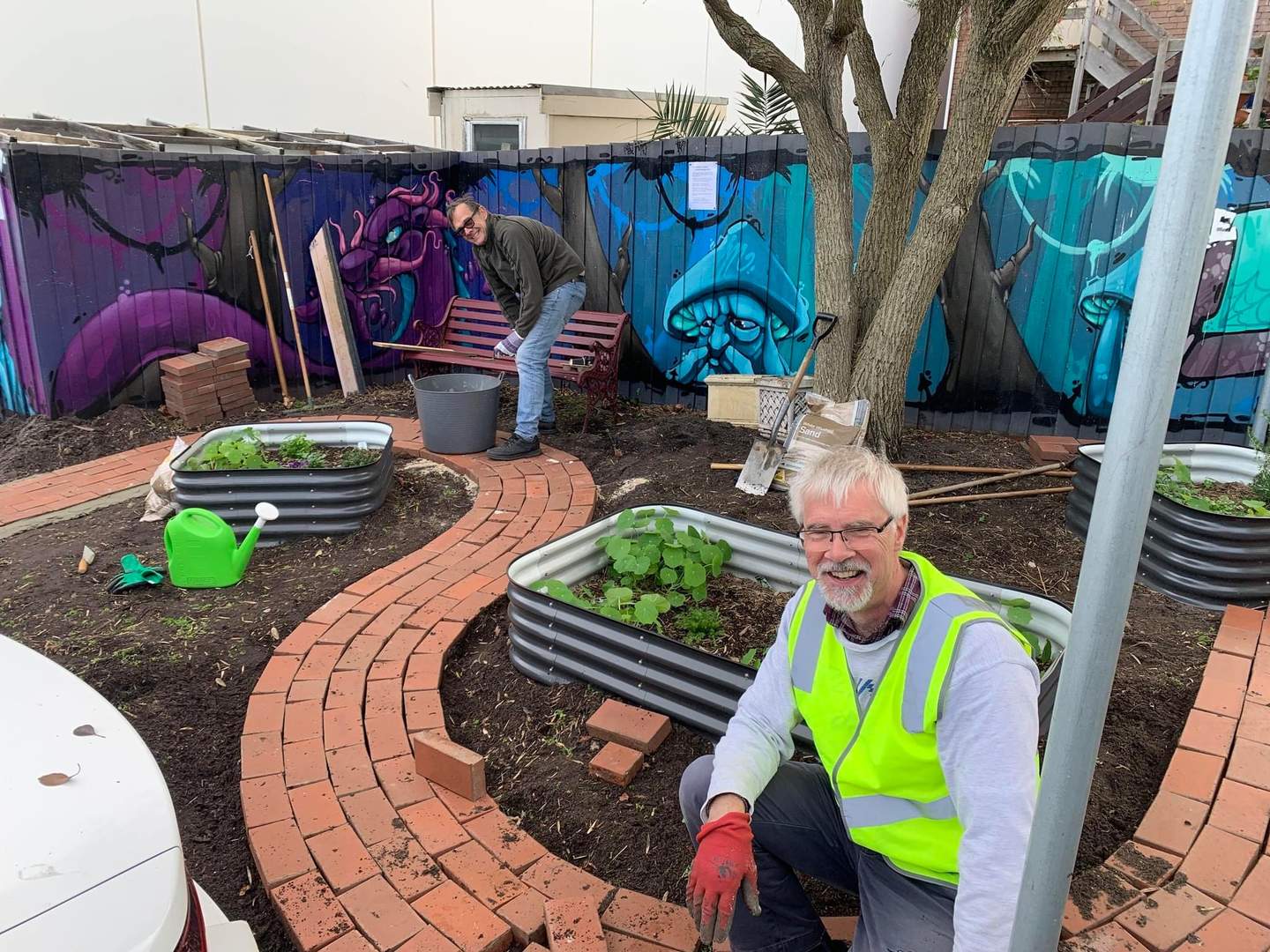
Exploring the idea of a new community garden on Council land?
Before applying to use or lease Council-managed public open space for a new community produce garden, your group should consider joining an established community garden and investigating unused space on private or other public land.
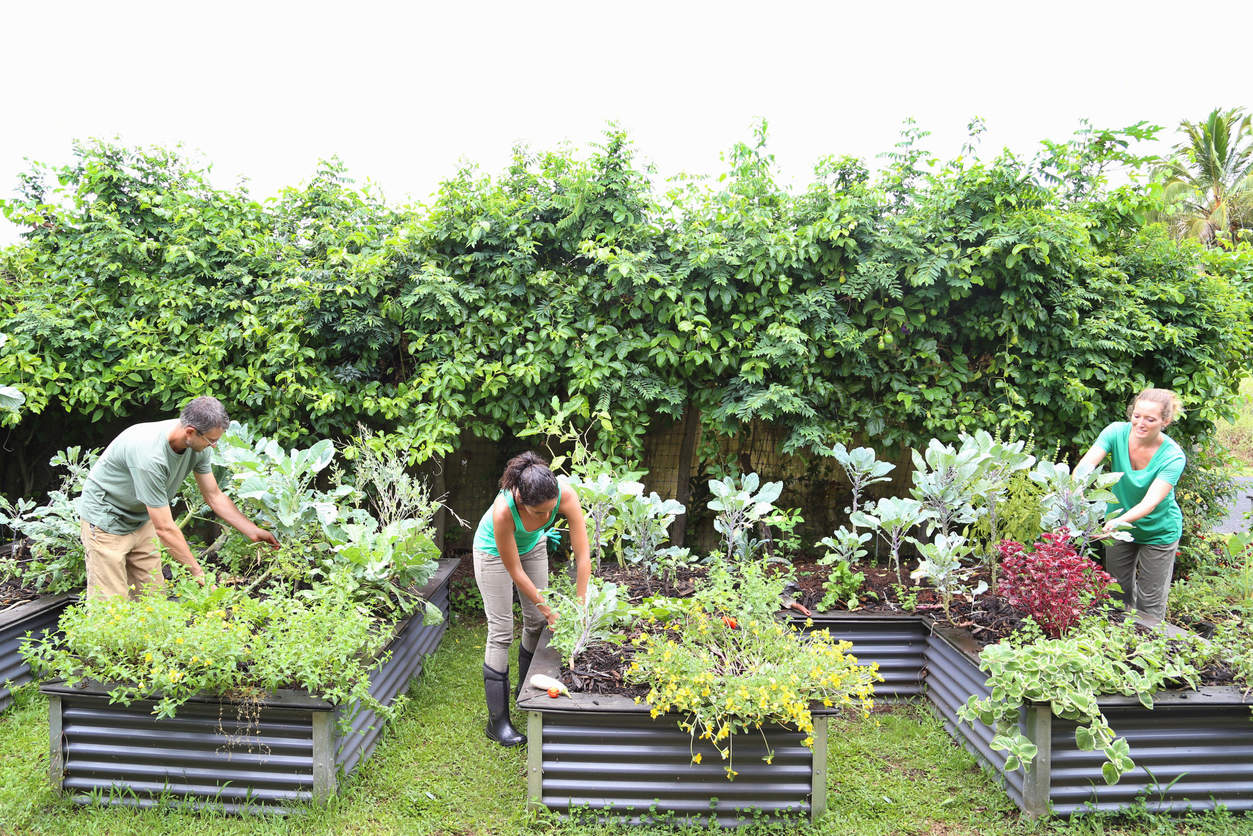
Your investigation could include the following:
- contacting one of the local community garden groups listed above
- contacting local schools, kinders, churches or other community organisations that own land. Some have kitchen gardens and may be looking for volunteer helpers. Others may be interested in working together to create a new community garden on their land.
- Scanning the local area on the 3000Acres website and registering your interest in any potential sites outside of Bayside.
If there is not a local community gardening initiative that's the right fit, consider exploring the idea of a new community garden, ideally with the help of a group of like-minded people.
When starting as a new group, holding a few group meetings is recommended to clarify and document your group's initial 'project proposal'. This process will help you identify your group's goals and objectives, consider resources and anticipate challenges you will need to overcome.
You must also review Council's Community Garden Policy, as all eligible community groups, residents or organisations wanting to utilise Council land to develop a community garden must provide adequate information to assess the application.
To progress your community garden idea, it is important to establish in-principle Council support.
Please email sustainability@bayside.vic.gov.au your initial proposal to Council or post PO Box 27 Sandringham VIC 3191 covering the criteria below. Further information on this process is in the Community Garden Policy Stage 1 section.
Reasons for establishment
An example could be:
Is this proposed garden to provide an area for the community to come together to grow and share local food and produce and/or to activate a neglected or underutilised area of public open space.
Site suitability
For example, is the proposed garden:
- going to be built on Council public open space or leased community space.
- linked to an existing community facility
- has access to amenities such as public toilets (all abilities) and shelter
- has access to water
- is universally accessible
- has good access to sun
- surrounded by residential properties
- near an established community garden that's within walking distance.
Community group establishment and support
For the proposal to be assessed there must be:
- a minimum of five interested community members that are willing to establish a formal "garden group" or similar
- in-principle support from any close neighbours and//or users of community buildings (where applicable)
Formal requirements
For the initial proposal (Stage 1) to be assessed there must be intent shown from the garden group to become officially incorporated (if they aren't already) or have an auspice. This will enable Council to proceed with any formal requirements if they see this proposal has good merit. So please be clear in your proposal about what your steps are to become incorporated or to find a group to be your auspice (sponsor).
For your information the next steps in the assessment (Stage 2) would be for Council to begin the permit and community engagement processes and the subsequent drafting of a Community Garden Lease between Council and the Group. The Lease would need to include certificate of incorporation, public liability insurance, final site design and an Environmental Management Plan. Please note there is a minimum leasing fee for not-for-profit groups that is set annually through the budget process under fees and charges.
Community garden model
|
This information will give Council an indication on where the group would prefer the community garden to be fenced, open, shared, have member allotments, or is a facilitated space where the group manages the garden on behalf of Council. |
Resources and More Information
If you have any questions about setting up a new community garden or needing help with the criteria please contact the Sustainability Team.
You can also use the following sources for more information on community gardens:
- The Community Gardens Manual on the Sustainable Gardening Australia website-external site.
- The 3000acres website-external site, a not-for-profit platform for mapping vacant land, outside of Bayside, suitable for community gardening.
- The Cultivating Community website-external site, a not-for-profit that runs urban agriculture projects and has a wealth of knowledge on setting up community gardens
- The Food Alliance website-external site, a research and advocacy group that supports the urban agriculture in Victoria.
- The Community Gardens Australia website that has a fabulous resource section with downloadable templates for Environmental Management Plans and all the FAQ's and do's and don'ts for community gardens in general.
